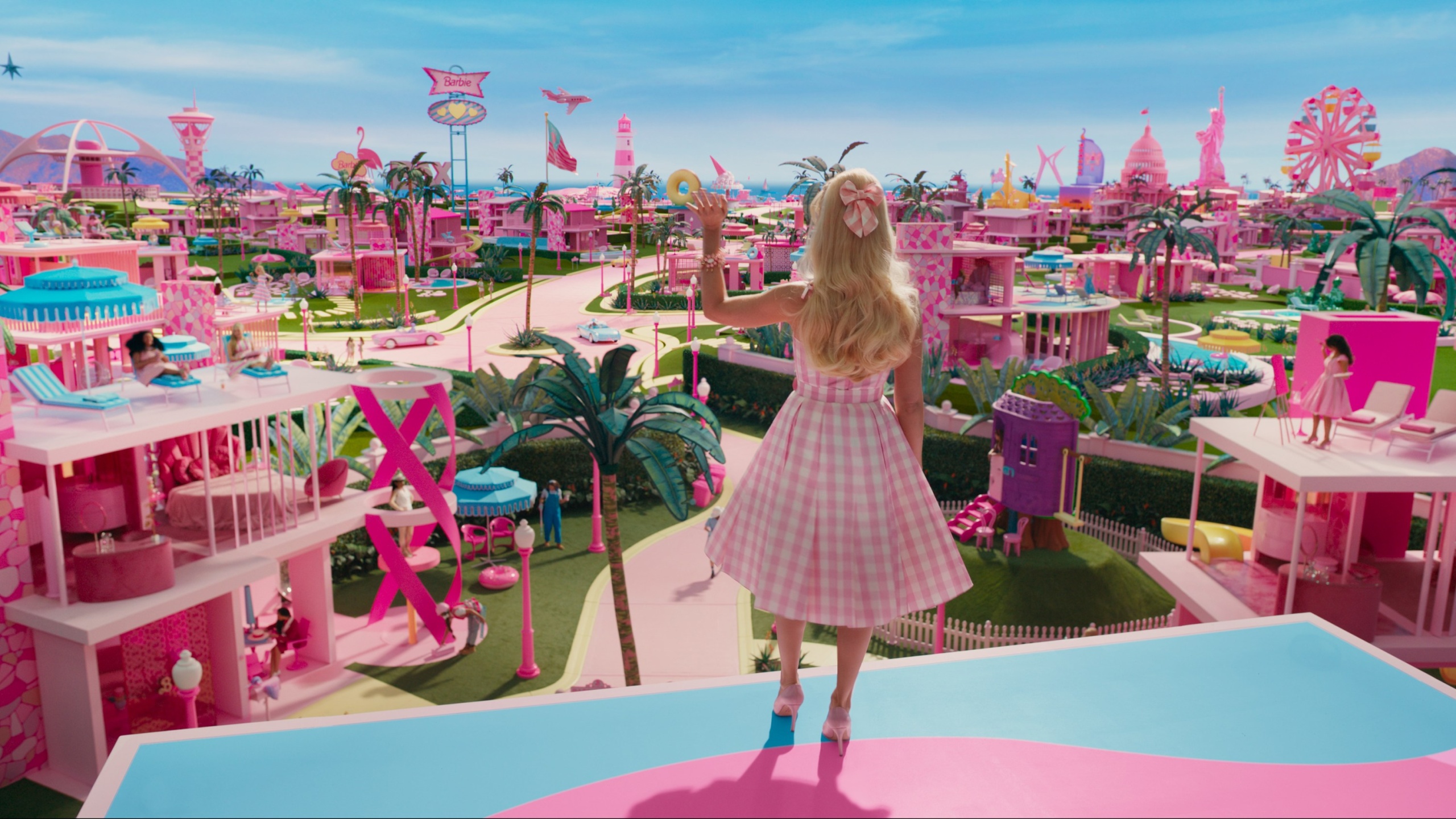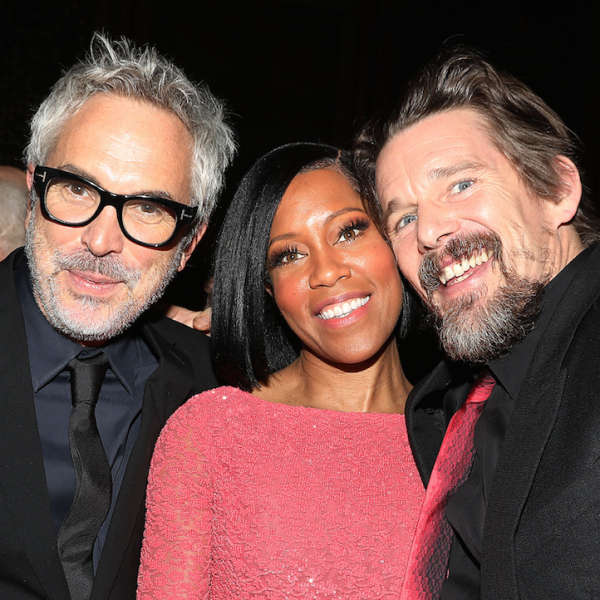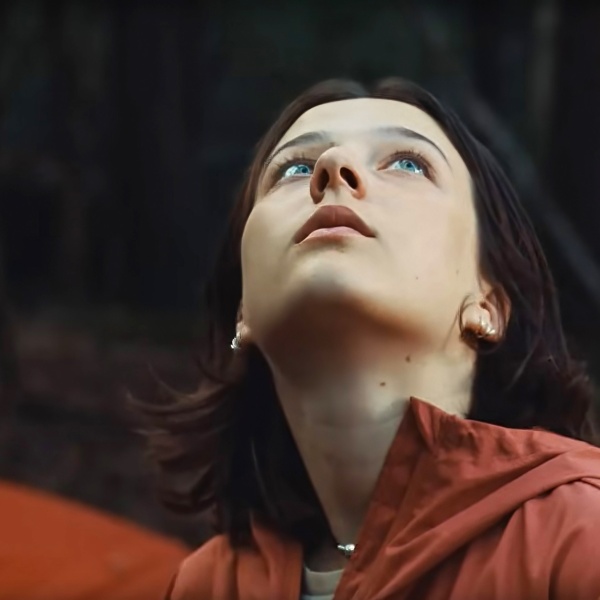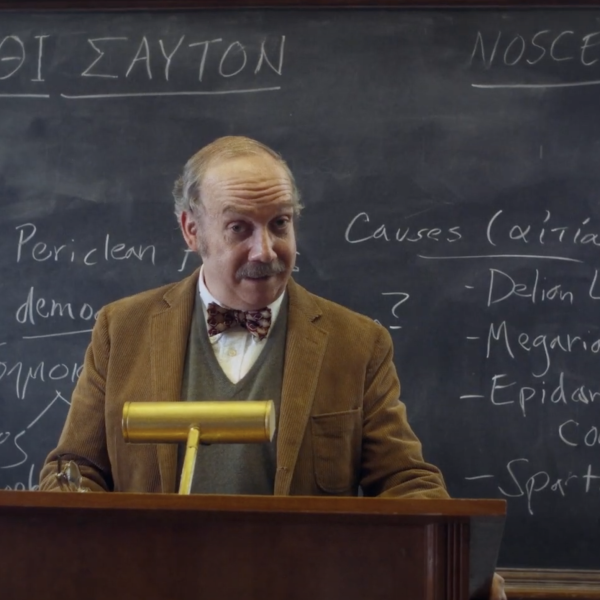[Editor’s note: The following interview contains spoilers.]
Of all the movie references crammed into Greta Gerwig’s blockbuster “Barbie,” the most important is “The Matrix” because it serves as the foundational basis for Barbie’s (Margot Robbie) journey from the feminism of Barbie Land to the patriarchal “real world” of Century City and Venice.
That’s the moment, of course, when Weird Barbie (Kate McKinnon) offers Robbie’s Stereotypical Barbie the choice of maintaining the status quo with the pink heel or escaping to the real world in a Birkenstock to solve her existential crisis.
For production designer Sarah Greenwood and set decorator Katie Spencer (who have six Oscar nominations between them), Barbie Land was unknown territory. But it was instructive to have the contrast between Barbie Land and L.A. in the script by Gerwig and Noah Baumbach.
“Not that it’s real, but L.A. was a given,” Greenwood told IndieWire. “Even though we’re [British] outsiders, we kind of understood it. So it felt like at least we got something to get hold of because we had no idea what Barbie Land was going to be.”

Greenwood and Spencer were both Barbie newbies and found the experience of designing Barbie Land a bit surreal. They started with a representation of Barbie Dreamhouse playhouses set against the modernist backdrop of mid-century Palm Springs. The eventual theme park-like layout was actually inspired by an unidentified suburban photograph, while the architectural style of Barbie’s Dreamhouse was influenced by the Kaufmann Palm Springs Desert House by Richard Neutra.
“We’re not recreating Mattel, we are interpreting the dream houses through the last 70 years,” Greenwood continued. “And it’s an amalgam of all the [Palm Springs] houses. But it had to work for our story and also to make it suitable. We were having twice weekly Zoom calls with Greta that were very philosophical and intellectual conversations about the nature of dolls and what it is to be a doll.
“You have no idea if these dollhouses are gonna be in any way joined. How are they gonna act?” Greenwood added. “And Greta explained so well how the dolls were going to be dolls and what it was like to be in this toyland, which is this hermetically sealed world where there’s no elements, there’s no wind or rain or fire, electricity, or water.”
In addition, the in-camera, on-set, practical method of production embraced by Gerwig was also a new experience. But it was perfectly in sync with the tactile, open-air, 360-degree view of Barbie Land. “Because we were constantly cross-shooting into the houses to put them on a circle, it meant that you were always looking at them,” said Greenwood. “And then we reduced the scale by 23 percent to make the actors look bigger. It was nice and compact. So there’s all these tricks that you learn slowly.”

There were also opportunities to embellish the sets for the musical set pieces, especially Barbie’s dance party. “That was a mix of everything,” Spencer told IndieWire. “It’s disco, it’s a bit of Studio 54, a little ‘Sweet Charity,’ it’s got sparkles. It’s Greta’s love of Barbie. She had lots of Barbies, but her favorite era was the ’80s. It’s interesting: They don’t eat or drink, so all they can do is dance or watch them dance and be happy.”
By contrast, Weird Barbie’s off-kilter house is a childlike design of blocks and triangles, partly inspired by the creepy Boo Radley house in “To Kill a Mockingbird” and Alfred Hitchcock’s iconic “Psycho” house. “It’s the house in the neighborhood you don’t go to, like the Boo Radley house,” Greenwood said. “It’s scary, but it’s not scary at all, like Weird Barbie, who takes care of all the broken and discontinued Barbies. Like the ‘Psycho’ house, it’s on top of the hill. So, it’s kind of a slight bastardization of that as well with the roof.”
The biggest surprise, though, occurs when Barbie enters a 1950s kitchen on the 17th floor of Mattel HQ in Century City. The woman sitting at the kitchen table turns out to be the ghost of Barbie inventor and Mattel founder Ruth Handler (Rhea Perlman). “That was lovely,” said Greenwood. “We called it ‘The Magical Kitchen,’ and her story was amazing.”
The recreation included several Handler Easter eggs. “Just in the corner, she’s got her own little doll’s house, which is like the Barbie house, with flamingos and things like that,” Spencer added. “And she used to type up scripts for movies, so there’s lots of movies there. She’s making gold clothes on her sewing machine.”

After Ken returns to Barbie Land and remakes it in his patriarchal interpretation of the real world, the design becomes overrun with black and white, especially for his Mojo Dojo Casa House makeover. Greenwood and Spencer enjoyed this reversal as well. “The rules of Barbie Land were no black, no white, nothing from the real world,” Greenwood said. “When we asked Greta if we could make it really ugly, she said, ‘Absolutely, go for it.’”
“The deadness and the beauty was in the mini-fridges and the leather sofas and the Hummers,” Spencer added. “And also what I love as well is all the television screens that he places in peculiar places like the chimneys and in the gardens because there’s no walls, of course. It’s all playing the same footage of horses cantering slowly towards camera and then stopping. And there is a sort of melancholia about that as well, so it’s the comedy and the pathos.”



